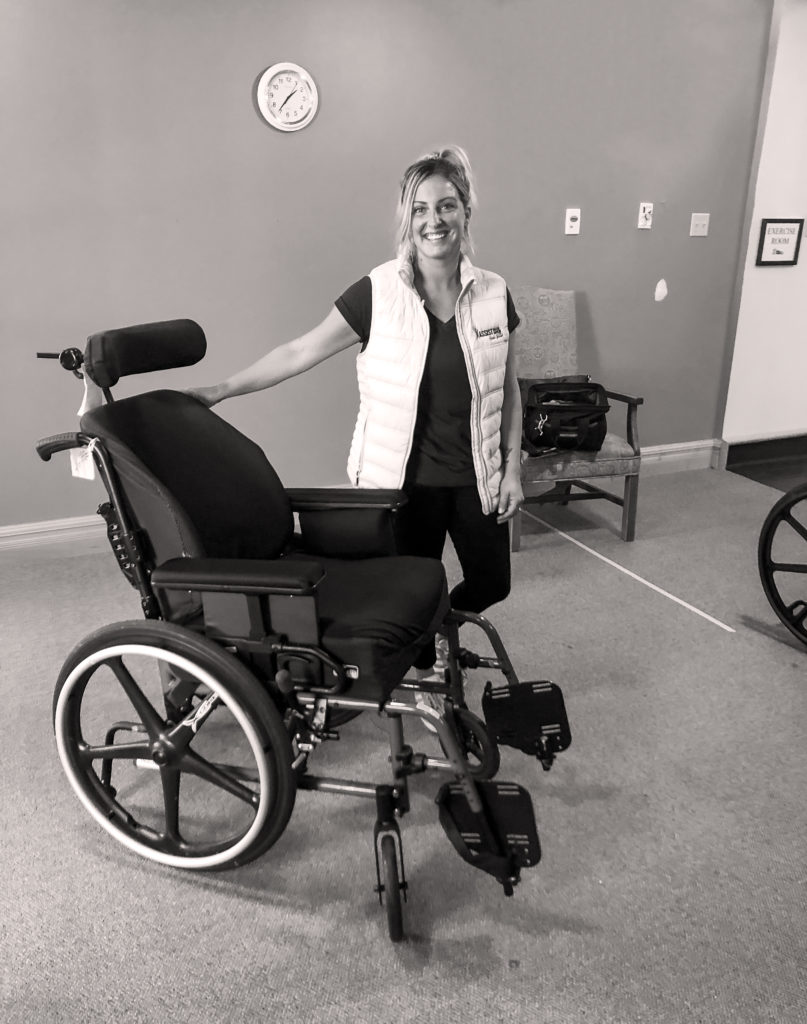Calgary is a city built on the promise of openness. Open skies. Open spaces. Open…

If it doesn’t fit, you can’t sit!
Preventing Sliding in a Wheelchair
Sliding out of a wheelchair is a common problem faced by wheelchair users with a reduced ability to reposition themselves throughout the day. Depending on various factors such as their current mobility device and seating system, or their living environment (long-term care vs. home), there are several seating strategies we can take to reduce the probability of sliding while still maintaining their functional abilities. Prior to making any changes to their seating system and mobility device, a full assessment is required to identify the seating goals and what options are available with their current system.

Seating Changes
One option is a seat belt (2 or 4-point padded is the most common). If the manual wheelchair user is in a long-term care setting, it may not be possible to use this due to restraint-free policies. This typically means that if the client is unable to remove the seatbelt independently, they cannot have a belt on their chair. In such cases, changes to the cushion and backrest can be suggested.
There are some cushions on the market that are contoured or anti-thrust. These cushions are lower in height at the rear with a slope to prevent forward sliding. Another option is adding a foam wedge to the bottom of the current cushion. Foam wedges come in various heights (e.g., 1”, 1.5”), depending on what is required. Additionally, the backrest can be changed to provide a rigid support system to help prevent posterior pelvic tilt. Lumbar supports can also be added to the rigid backrest for ideal spinal alignment.
Adjustments to the Mobility Device
Many manual wheelchairs available today, including those funded through the AADL program, can be adjusted to reduce sliding. One effective adjustment is to “dump” the manual wheelchair, where the front of the wheelchair is higher than the rear, placing the user in a fixed tilt position. Models like the Ki Mobility Catalyst 4C or Sunrise Medical Breezy 600 can achieve up to a 2” dump with parts changes.

When adjusting the chair’s configuration, factors like caster journal angle (to maintain a 90-degree angle) must be considered to optimize performance and reduce rolling resistance. The client’s function should also be assessed to ensure that their abilities, such as eating, swallowing, and vision, are not compromised. Further adjustments, such as altering the back angle or tension straps in the backrest, may be needed for proper support.
Consulting with Experts
It is highly recommended that an Occupational Therapist (OT) and Seating and Mobility Specialist are consulted before making any changes. This ensures appropriate solutions are tailored to the client’s needs. Some requests, such as adding a pommel to the wheelchair, are not appropriate for addressing sliding. Pommels are designed to prevent leg scissoring, particularly in pediatric clients, not to stop sliding.
When a New Mobility Device May Be Needed
If these adjustments do not resolve the issue, a new mobility device with advanced tilt capabilities may be necessary. Devices offering up to 50 degrees of tilt utilize gravity to prevent sliding while making it easier to reposition the user. At Assist Health Supplies, we offer rental options and expert guidance to help you select the right wheelchair or mobility aid.
We practice a standard of excellence in creating solutions for clients of all shapes and sizes. If you have questions about preventing wheelchair sliding or other mobility aids, our team is here to help. Contact us today for more information.



